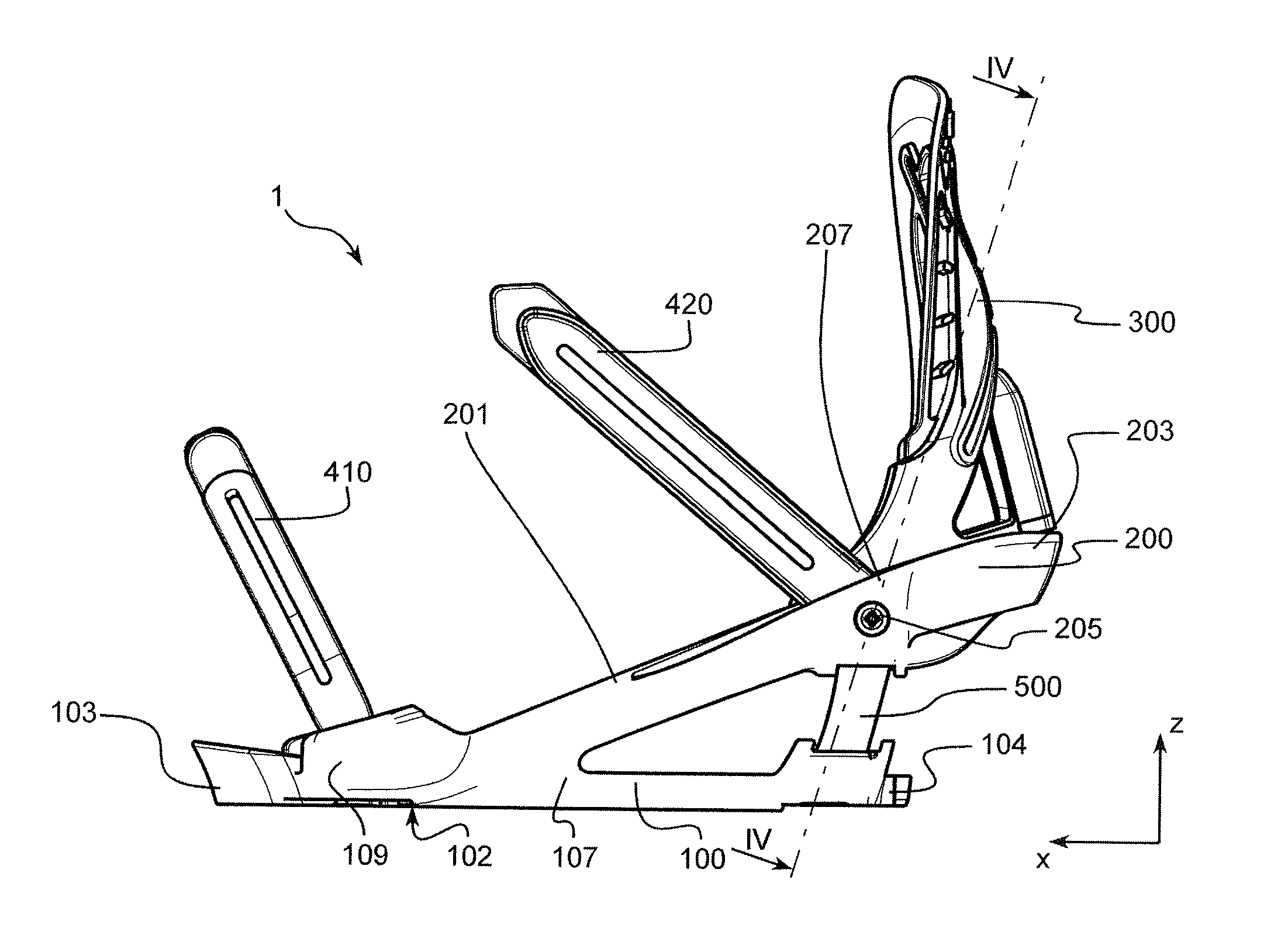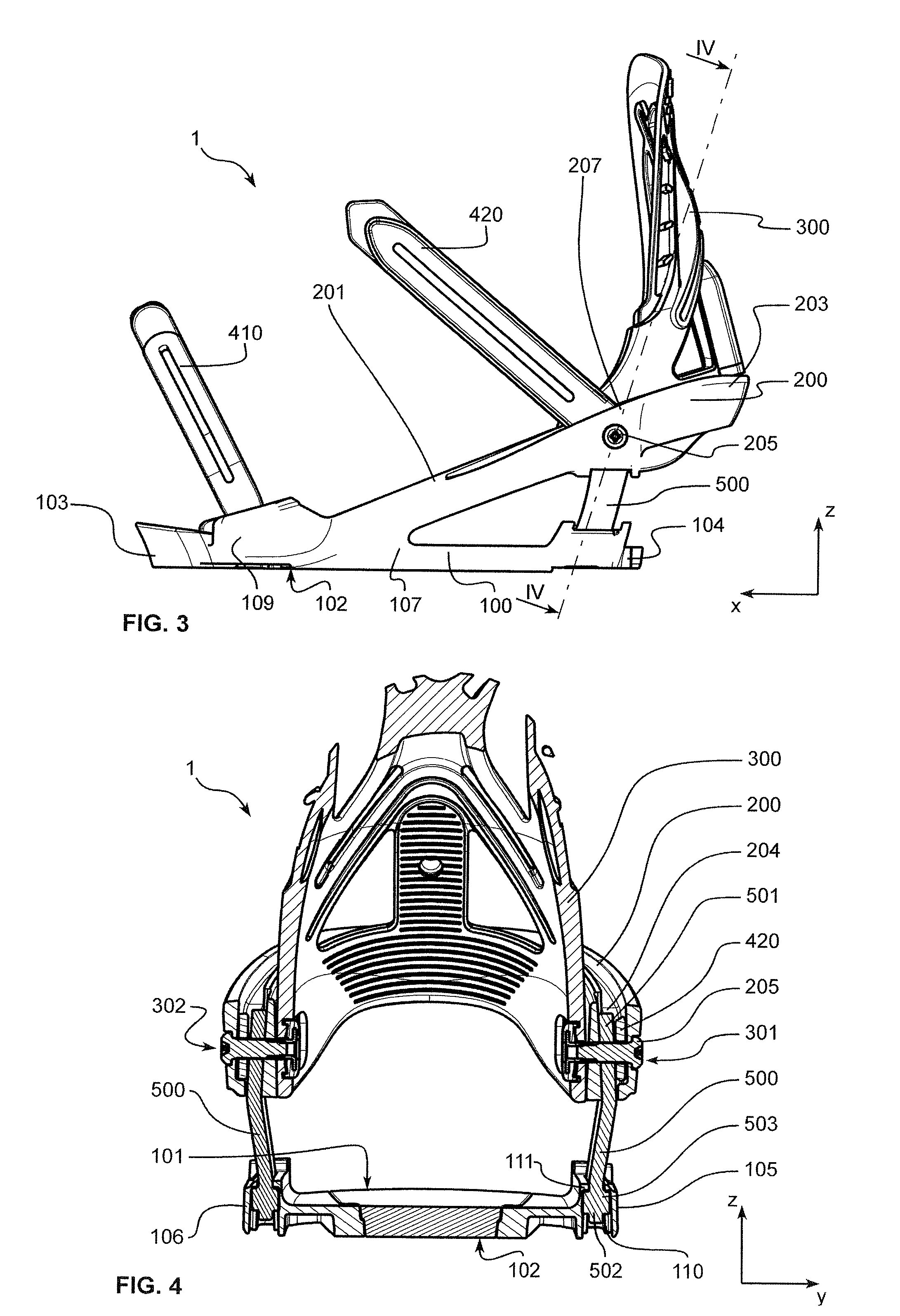Device for receiving a boot on a gliding apparatus
a technology for receiving a boot and a gliding apparatus, which is applied in the direction of skis, sport apparatus, snowboard bindings, etc., can solve the problems of limiting the movement of the foot or the boot in relation to the board, the heel loop is not capable of deformation, and the user's inconvenience, so as to reduce the stress of exertion, improve the application of the foot or the boot, and the effect of less rigidity
- Summary
- Abstract
- Description
- Claims
- Application Information
AI Technical Summary
Benefits of technology
Problems solved by technology
Method used
Image
Examples
first embodiment
[0066]With reference to FIGS. 1 to 4, two connecting elements 500 are shown, each located on a different side 105, 106 of the binding base 100. More particularly, the connecting elements 500 may be located in the rear portion of the first 105 and second 106 sides of the binding base 100. In this way, each connecting element 500 also cooperates with a rear lateral portion 207, 208 of the heel loop 200.
[0067]In general, the connecting element 500 is configured to allow, along a limited range of clearance, the displacement of the rear portion of the heel loop 200 in relation to the binding base 100, through a change in the configuration of the elements 500. This change in configuration means a deformation of the connecting element 500, a movement of the element 500, or any other change in shape or position of the element 500 making it possible to limit the clearance. The change in configuration of the connecting element 500 allowing the clearance is however limited, such that only a re...
second embodiment
[0071]This configuration is particularly visible with reference to the second embodiment and in particular with reference to FIG. 7, the mounting of the connecting element 500 being similar between the two embodiments illustrated. Also shown in FIG. 7 is that the heel loop 200, in this embodiment, has a slot 204 in the area of each of the lateral portions 201, 202, such slot being substantially oriented along the height direction corresponding to the direction “z”. The slot 204 extends through the heel loop 200 in the area of the hole 206 forming the bearing of the shaft 205, so that the first end 501 of the connecting element 500 can be inserted inside the heel loop 200 to be held therein by the shaft 205. The latter may be in the form of a screw, for example, the head of which blocks one side of the heel loop 200 and cooperates with an opposite fastening element, performing the function of a nut.
[0072]In a particular embodiment, the vertical slot 204 of each lateral portion 201, 2...
PUM
 Login to View More
Login to View More Abstract
Description
Claims
Application Information
 Login to View More
Login to View More - R&D
- Intellectual Property
- Life Sciences
- Materials
- Tech Scout
- Unparalleled Data Quality
- Higher Quality Content
- 60% Fewer Hallucinations
Browse by: Latest US Patents, China's latest patents, Technical Efficacy Thesaurus, Application Domain, Technology Topic, Popular Technical Reports.
© 2025 PatSnap. All rights reserved.Legal|Privacy policy|Modern Slavery Act Transparency Statement|Sitemap|About US| Contact US: help@patsnap.com



